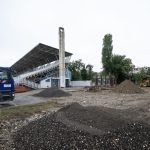
ZAGREB, July 8, 2020 – The European Commission on Wednesday presented two energy transformation strategies that should contribute to achieving a climate-neutral Europe by 2050.
The commission presented the EU Energy System Integration Strategy and the European Clean Hydrogen Alliance Strategy.
Addressing a press conference Executive vice president of the Green Deal, Frans Timmermans said, “The strategies adopted today will bolster the European Green Deal and the green recovery, and put us firmly on the path of decarbonising our economy by 2050. The new hydrogen economy can be a growth engine to help overcome the economic damage caused by COVID-19.”
The energy system accounts for 75% of the EU’s greenhouse emissions hence it needs to be transformed in order to become climate-neutral by 2050.
Today’s energy system is built on parallel and vertical energy value chains which rigidly link specific energy resources with specific end-use sectors.
Climate-neutral economies cannot be based on unconnected structures, the Commission underlined, adding that the system is economically inefficient and leads to substantial losses in the form of waste heat and low energy efficiency.
The energy system integration strategy presents a vision of integrating energy systems in an effort to boost the use of clean energy and climate-neutral economies while at the same time, strengthening energy security, protecting health and the environment and promoting growth and enhancing EU industrial leadership at a global level.
The clean hydrogen strategy focuses on renewable energy sources, or clean hydrogen as opposed to hydrogen obtained from fossil fuels. Clean hydrogen has the greatest potential to decarbonise industrial processes and it is essential in supporting the EU’s commitment to reach carbon neutrality by 2050.









